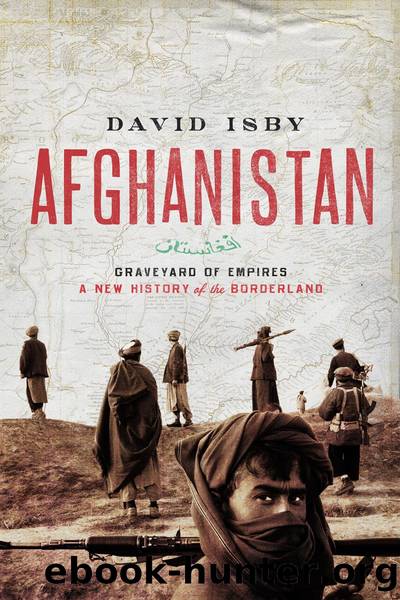1605981893 (N) by David Isby

Author:David Isby [Isby, David]
Language: eng
Format: epub
ISBN: 9781453217979
Publisher: Pegasus Books
Published: 2011-11-21T22:00:00+00:00
CHAPTER EIGHT
PAKISTANâs INSURGENCY
âThere is a great deal of ruin in a nation.â
âAdam Smith, 1782
In recent years, effective governance in Pakistan has eluded both military and civilian governments. The current civilian government has engaged in political infighting rather than building up their credibility or addressing Pakistanâs economic and security crises. Governmental and economic power remains largely in the hands of the military, elites, and bureaucracy in a system frequently described as feudal. The Pakistani military continues to view itself as the insurer of independence, distrusting civilian rule. It is willing to run the country as well as defend it. The continuing security competition with India has provided the rationale for the Pakistani military to maintain effective control over their countryâs national security policy, including that in Afghanistan. The militaryâs increased entrenchment in the economy and government has led to them taking on the feudal characteristics of the civilian leadership. Different elites seek to maintain their power and hold over patronage networks with what often appears to be scant regard for the national interest or for the bulk of the population.
Pakistanâs civil society, as a whole, remains weak. Institutions and practices that could enable civil society have been largely ignored by elites and underfunded throughout the history of Pakistan, resulting in state schools that do not function and taxes that are not collected. With the state school system plagued by absent unpaid teachers, Pakistanis have turned largely to religious-based education. The madrassa system increased from 900 schools in 1971 to, by 1988, 8,000 official and 25,000 unregistered madrassas, an estimated two-thirds of them connected to the Deobandi movement.366 Only an estimated one percent of the entire population pays income tax.367 Yet continued support for democracy still endures, despite widespread disillusionment with the current elected civilian government. A desire for the revival of civil society has been demonstrated in protests led by lawyers and young people in recent years.368
The Baluchistan Insurgency
The current fighting in Baluchistan has been essentially ongoing since 1973â77, and no resolution is in sight.369 It pre-existed and is distinct from the insurgency and terrorism that have emerged elsewhere in Pakistan since the defeat of the Afghan Taliban in 2001.370 Pakistan has long ascribed the Baluch insurgency as well as secular Pushtun and Sindhi nationalism to Indian-led actions. Indeed, the Pakistan military sees these problems primarily in terms of Indian aggression, rather than a symptom of problems at home.371
Conversely, it is widely believed in both Pakistan and Afghanistan that the Pakistani military has been responsible for the increased presence of the Afghan Taliban and their Pakistani allies in Baluchistan. They believe that the Pakistani military is aiming to use insurgents that it believes it could control as a counterweight to the nationalist Baluch insurgents. This sentiment led to Pakistani escalation of the Baluchistan conflict starting in 2005, while at the same time they were concluding truces with the Pushtun insurgents in the FATA that were to become the Pakistani Taliban.372 In 2006, the Pakistani military used tactical aircraft and attack helicopters against Baluchi villages, incurring international and domestic condemnation.
Download
This site does not store any files on its server. We only index and link to content provided by other sites. Please contact the content providers to delete copyright contents if any and email us, we'll remove relevant links or contents immediately.
| Africa | Americas |
| Arctic & Antarctica | Asia |
| Australia & Oceania | Europe |
| Middle East | Russia |
| United States | World |
| Ancient Civilizations | Military |
| Historical Study & Educational Resources |
Magic and Divination in Early Islam by Emilie Savage-Smith;(1498)
Ambition and Desire: The Dangerous Life of Josephine Bonaparte by Kate Williams(1343)
Bohemians, Bootleggers, Flappers, and Swells: The Best of Early Vanity Fair by Bohemians Bootleggers Flappers & Swells- The Best of Early Vanity Fair (epub)(1341)
Papillon by Henry Charrière(1307)
Twelve Caesars by Mary Beard(1254)
Operation Vengeance: The Astonishing Aerial Ambush That Changed World War II by Dan Hampton(1134)
What Really Happened: The Death of Hitler by Robert J. Hutchinson(1127)
London in the Twentieth Century by Jerry White(1111)
Time of the Magicians by Wolfram Eilenberger(1086)
The Japanese by Christopher Harding(1084)
Twilight of the Gods by Ian W. Toll(1083)
Lenin: A Biography by Robert Service(1042)
The Devil You Know by Charles M. Blow(984)
A Social History of the Media by Peter Burke & Peter Burke(936)
Freemasons for Dummies by Hodapp Christopher;(921)
Napolean Hill Collection by Napoleon Hill(902)
Henry III by David Carpenter;(890)
The Churchill Complex by Ian Buruma(879)
The Rise and Triumph of the Modern Self by Unknown(877)
